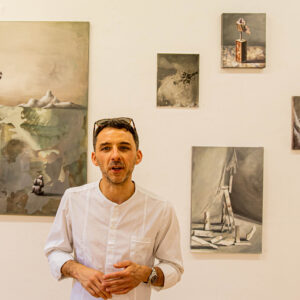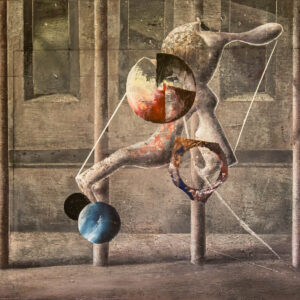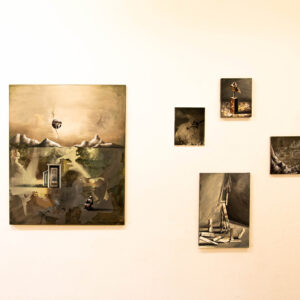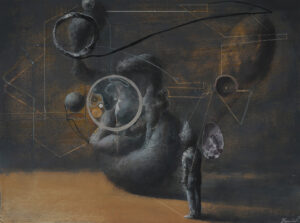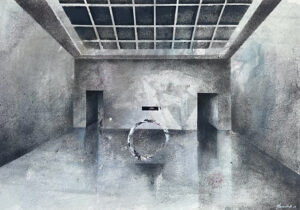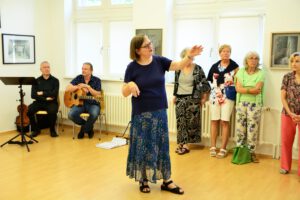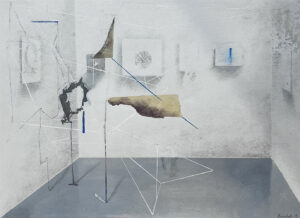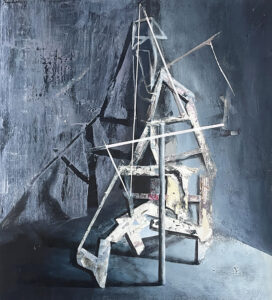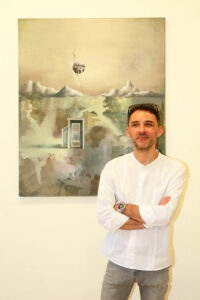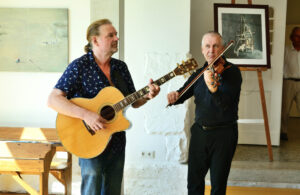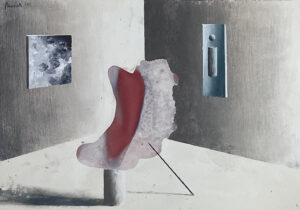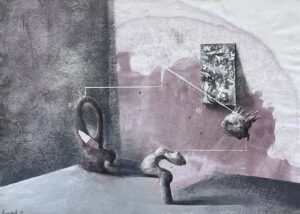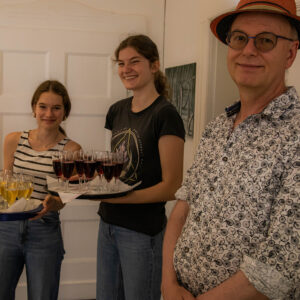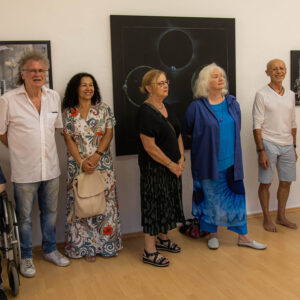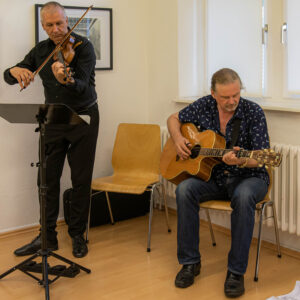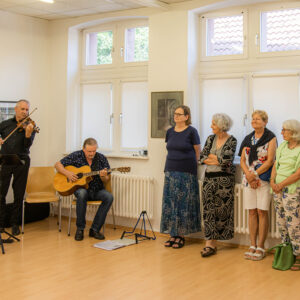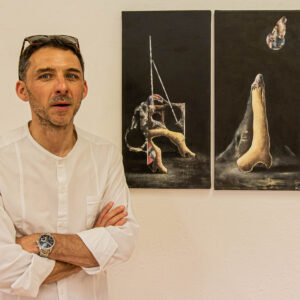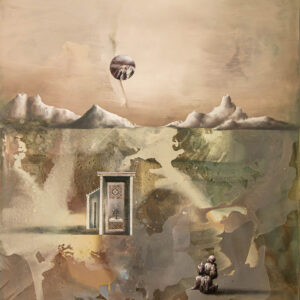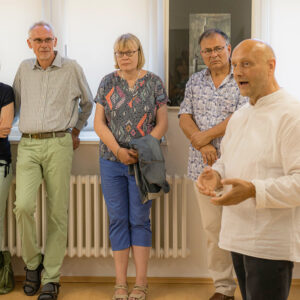21. Juli bis 30. August 2024 im Studio
Die Kunststation Kleinsassen freut sich darauf, Prof. Łukasz Huculak aus Wrocław (Breslau) begrüßen zu können – im Rahmen des seit 2013 bestehenden Via-Regia-Künstleraustausches entsandt von dem Künstlerhaus Schloss Königshain im Landkreis Görlitz. Łukasz Huculak wird im offenen Atelier malen und ausstellen. Der Künstler will sich intensiv mit der Kulturgeschichte Fuldas und den Schriften des Hrabanus Maurus auseinandersetzen. Besondere Aufmerksamkeit schenkt er den berühmten Figurengedichten „De laudibus sanctae crucis“, deren Erscheinungsform an konkrete Poesie denken lässt. Im Studioraum der Kunststation werden Werke zu sehen sein und neu entstehen, die geometrische und buchstabenähnliche Elemente enthalten und zwischen Lesbarkeit und Unlesbarkeit, Sprache und Abstraktion changieren. Einige sind auch als Allegorie, als „beredtes Bild“, zu enträtseln.
Zu den Hintergründen seines Projektes schreibt Łukasz Huculak selbst:
Rabanus Maurus, a figure with quite an exotic name, is not widely known, and even if, he is praised more by church historians than in the contemporary art world. In spite of his eastern alias, he was an exemplary Christian and one of the first scholars of the first Carolingian, a former clergyman from the monastery of Fulda. One of the most important of his works, concerning the mysticism of participation, „In Honorem Sanctae Crucis“, robbed by the Swedes from the Prague book collection of Rudolph the II, the famous curiosity admirer, has been returned to the Vatican thanks to the eminent convert Swedish Queen Cristina.
Im Juli ist der Künstler vom 23.7. bis 28.7. täglich während der Öffnungszeiten in seinem Ausstellungsraum / in seinem Offenen Atelier anzutreffen.
What exactly within this medieval apology for the „instrument of torment“ has caught the attention of the Habsburg arch-collector of curiosities? On the pages of „De laudibus sanctae crucis“ we come across puzzling, crossword-like visual games in which color emerges from a net of seemingly random letter sequences, characteristic geometric structures, readable symbols, and then meanings hidden in signs. What at first glance looks like the work of a madman, maniac or mystic, is in fact a tribute to the creative power of language and the magic of the alphabet. Each page of this unique work contains a particular type of poetry, defined by geometry and color organized in a seemingly chaotic letter grid.
The struggle between visuality and verbality, rational meaning with persuasive power and eloquent meaning with sensual expression, is one of the most important issues of contemporary art. The exhibition, referring to the work of Rabanus Maurus and the medieval fascination with all the alliances of word and image, symbol, allegory, visual compensation of literature in the form of handwritten colophons, diagrams and eloquent initials, will refer to the inspiring coexistence of literary and visual means. Images evoke meanings and words evoke visions. Showing is better than telling. A detailed concept of the structuralism of Rabanus Maurus’s poetry recalls various phenomena of contemporary art from the area of concrete poetry, from Lawrence Weiner, Barbara Kruger, to Stanisław Dróżdż. It evokes the hermetic and magical belief in the effectiveness of spells and incantations, as well as linguistic signals that attention and grammar reveal the secrets of reality and the mechanisms of its perception. The book, created in the context of Byzantine iconoclastic disputes, is not only a mystical record of traces of the presence of higher powers and providence found in geometry, but also a revealing visual game, in which the letter and the word – deprived of a clear meaning, they become a sensual phenomenon again, regaining the attractive, ambiguous attractiveness of the image.
Łukasz Huculak (*1977 in Rzeszów, Polen) studierte an der Eugeniusz-Geppert-Akademie der Schönen Künste in Wrocław (Breslau) und schloss 2002 mit dem Diplom ab. Seit 2015 führt er an der Akademie das Atelier für Malerei und ist Leiter des Fachbereichs Fakultätsübergreifende Promotionsstudien / Interdisziplinäres Promotionsprogramm.

